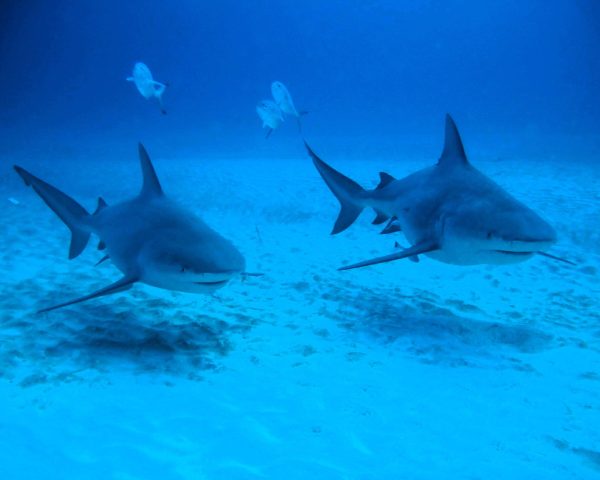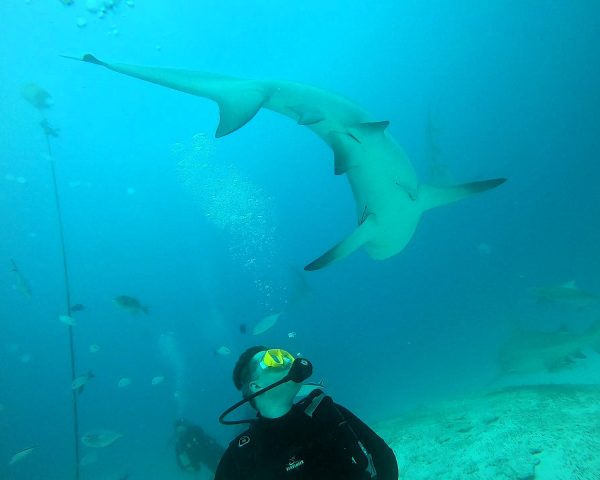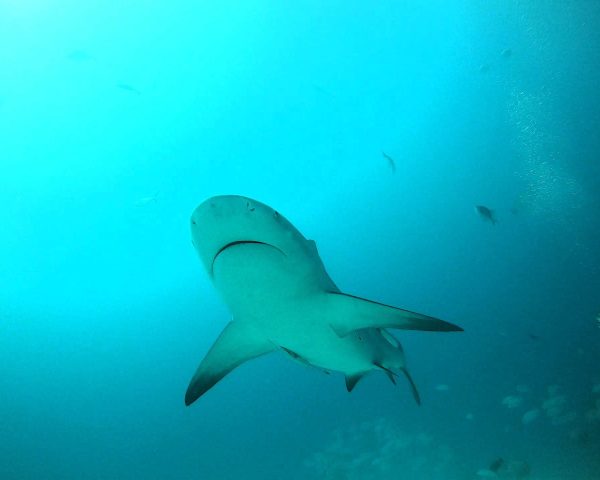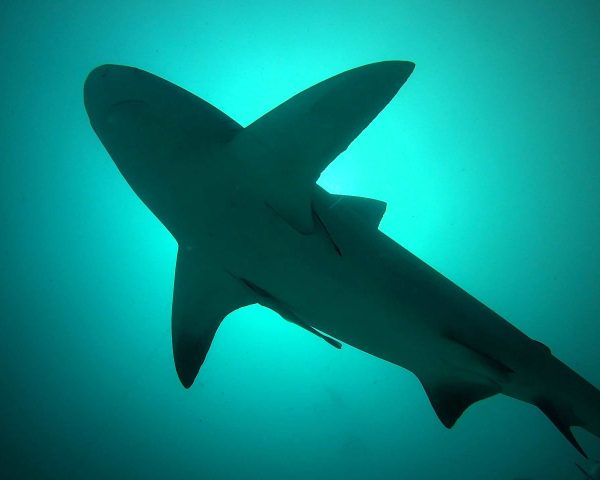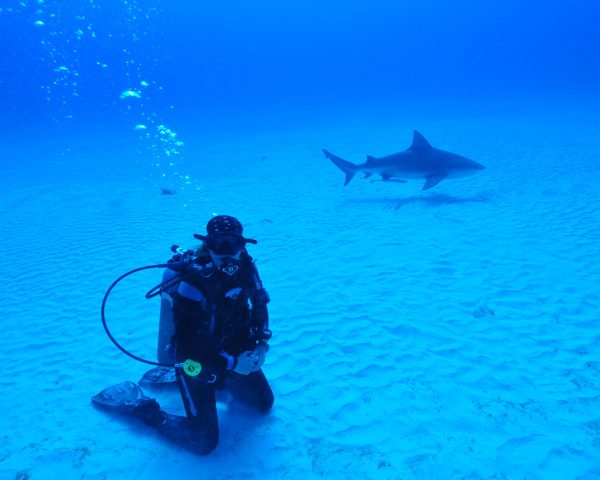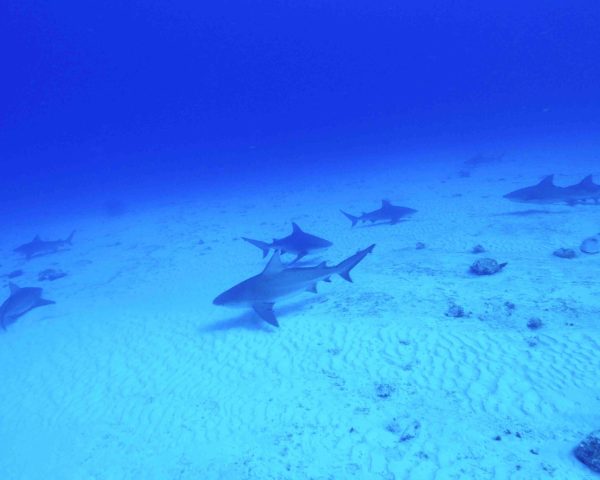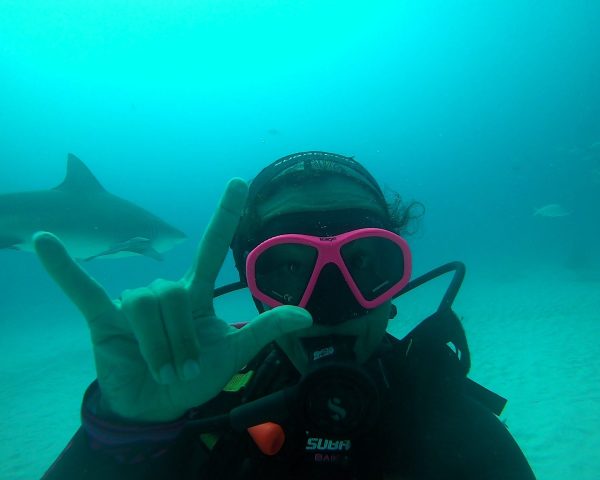Diving with Bull Sharks
There are only a few places around the world where you can experience a close encounter with bull sharks. One of them is Playa del Carmen in the State of Quintana Roo, Mexico.
Every year, between the end of November until the beginning of March, a population of pregnant female bull sharks congregates in the shallow waters along the coast of Playa Del Carmen before giving birth in deeper waters.
Diving with Bull Sharks is an exciting experience for the advanced diver. Our shark dives are conducted in a controlled and safe manner at a depths of about 25m/80ft on a sandy bottom.
Our objective is to provide divers with an opportunity of a close encounter with these majestic creatures to get a new perspective on sharks which need to be respected and protected.
Most importantly, our practice is not to feed the bull sharks during the dive as we believe that it changes the animals’ behavior.
Although we cannot guarantee the sight of bull sharks (after all this is happening in the big pool where we have no control over what’s going to swim by), we generally get visited by smaller groups of 3-7 bull sharks on some days and sometimes up to 15 bull sharks on others days.
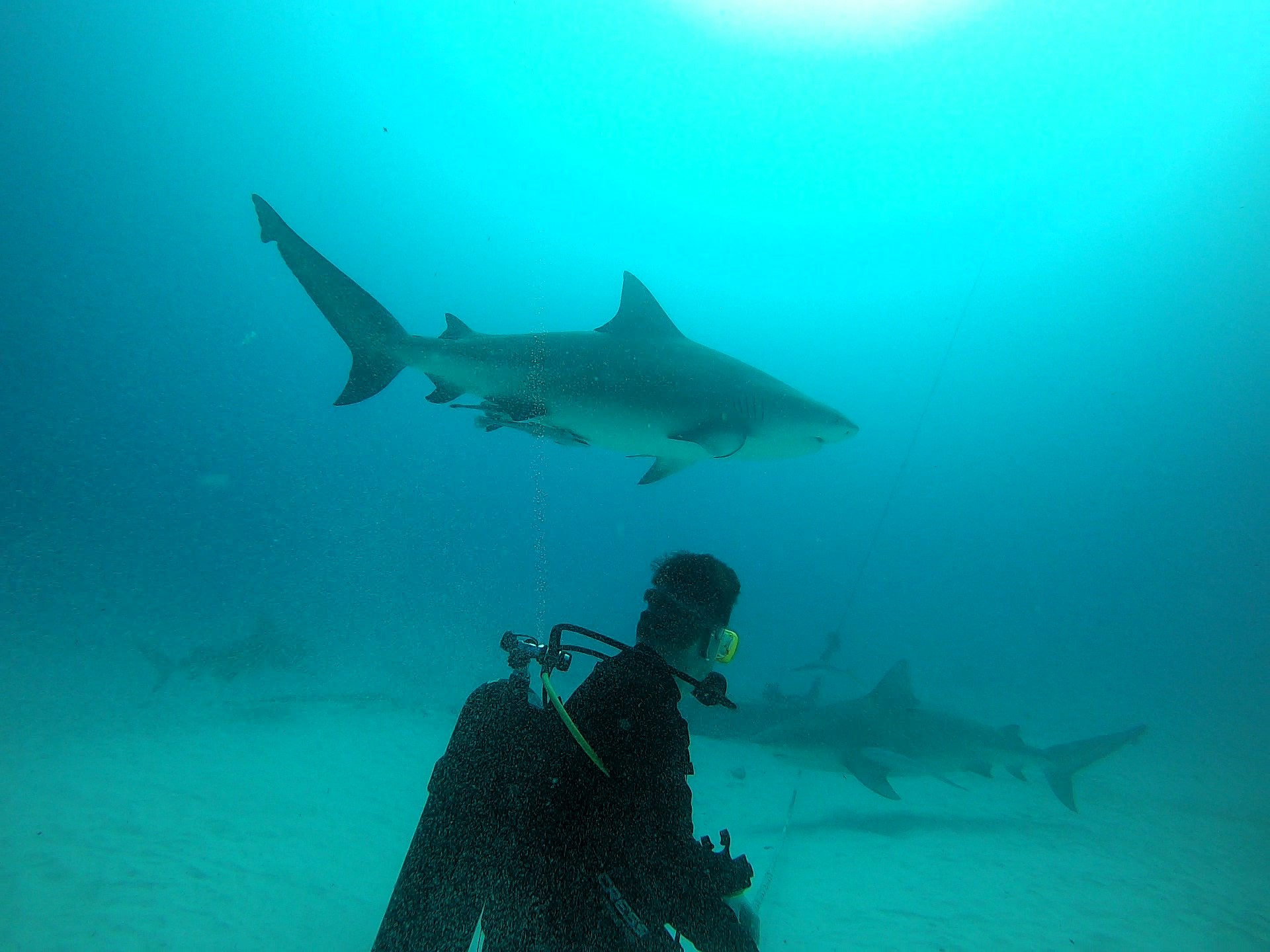
Bull Shark Diving
in Playa del Carmen
Price per person: $MX3,700 (*US$185) including
- 1 shark observation dive (no shark feeding)
- Professional Guide
- Equipment
- Round trip transportation from our dive shop
- Boat and Marine Park fees
- 16% VAT (Value Added Tax)
- Water
Requirements:
- minimum Advanced Open Water Diver certification
- must have dived with us previously
Overview - Diving with Bull Sharks
More detailed information will be provided once the season has started.
We meet at our dive shop in Akumal Pueblo where we get your equipment ready, load the truck, and drive to Playa del Carmen.
From Playa del Carmen, the the boat departs at (time to be determined) to take us to the dive site.
The dive site is very close. So, the boat ride will take just a few minutes.
The dive time with the bull sharks is limited to 30 minutes. Total dive time is 45 minutes.
After the dive, we return to Playa del Carmen.
After loading the truck we drive back to Akumal.
Contact us for more information or to make a reservation.

